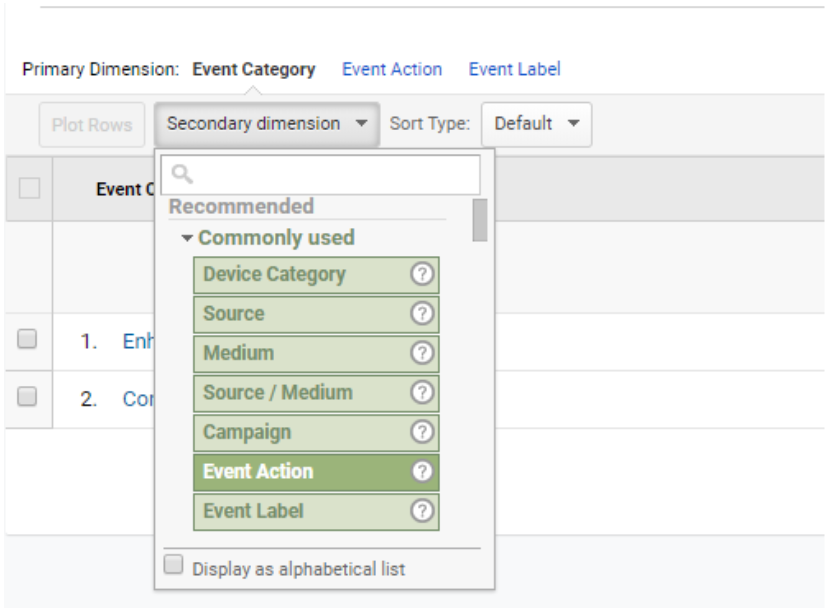Advanced Analytics Techniques: Leveraging Google Analytics Secondary Dimension
Wiki Article
Opening the Power of Additional Measurement Analytics for Enhanced Data Insights and Decision-Making
In the realm of information analytics, key measurements commonly take the limelight, however the true depth of understandings exists within the world of additional dimensions. By harnessing the power of secondary measurement analytics, companies can reveal covert trends, reveal relationships, and essence much more meaningful verdicts from their information.
Significance of Secondary Measurements
Discovering the importance of secondary measurements in analytics reveals the covert layers of data understandings important for informed decision-making in numerous domain names. Secondary measurements supply a deeper understanding of key data by offering extra context and perspectives. By including additional dimensions right into analytics, organizations can remove much more nuanced and comprehensive insights from their datasets.One trick value of secondary measurements is their ability to section and categorize primary information, permitting a much more detailed evaluation of specific parts within a dataset. When looking at the data as a whole, this division enables services to identify patterns, patterns, and outliers that could not be apparent. Additionally, secondary dimensions aid in uncovering connections and dependences in between different variables, causing even more accurate forecasting and predictive modeling.
Moreover, second dimensions play an important duty in boosting information visualization and reporting. By adding secondary dimensions to visualizations, such as charts or graphes, experts can develop extra insightful and helpful depictions of information, assisting in far better interaction of searchings for to stakeholders. On the whole, the assimilation of second measurements in analytics is crucial in opening the complete possibility of information and driving evidence-based decision-making.
Secret Benefits of Using Additional Dimensions
Utilizing secondary measurements in analytics supplies companies a calculated benefit by increasing the depth and granularity of data insights. One vital advantage of integrating additional dimensions is the capacity to sector and filter information, enabling a much more detailed evaluation of details elements within a dataset. This segmentation enables companies to get a much more nuanced understanding of their audience, efficiency metrics, and other essential data factors. By exploring data making use of additional dimensions such as time, area, gadget type, or user demographics, companies can discover patterns, trends, and relationships that may or else stay hidden.Furthermore, the application of additional measurements enhances the context in which main data is translated. It gives a much more thorough view of the connections in between different variables, allowing companies to make educated choices based upon a more alternative understanding of their information. Furthermore, additional measurements assist in the identification of outliers, anomalies, and locations for optimization, eventually bring about extra reliable techniques and boosted end results. By leveraging additional measurements in analytics, companies can harness the complete capacity of their information to drive better decision-making and accomplish their service purposes.
Advanced Data Analysis Methods
A deep study innovative information evaluation strategies discloses innovative approaches for removing valuable insights from complex datasets. One such technique is device knowing, where algorithms are utilized to determine patterns web within data, predict outcomes, and make data-driven decisions. This method enables the automation of logical version structure, allowing the processing of large volumes of information at a much faster speed than conventional methods.An additional innovative method is predictive analytics, which uses analytical algorithms and artificial intelligence methods to forecast future outcomes based upon historic data. By evaluating patterns and trends, companies can expect customer actions, market fads, and possible threats, encouraging them to make positive decisions.
Furthermore, message mining and belief analysis are beneficial methods for extracting understandings from unstructured information sources such as social media remarks, client reviews, and study responses. By assessing text information, organizations can understand consumer opinions, recognize emerging trends, and improve their services or products based upon responses.
Enhancing Decision-Making Through Additional Dimensions

Enhancing decision-making through additional measurements makes it possible for companies to make even more informed and targeted critical selections. By segmenting client information based on additional measurements like acquiring history or engagement degrees, business can tailor their marketing strategies to details audience segments, leading to enhanced conversion prices and customer satisfaction. Second dimensions can aid identify correlations and relationships in between various variables, allowing organizations to make data-driven decisions that drive development and productivity.
Carrying Out Secondary Dimension Analytics
When including second dimensions in analytics, organizations can open deeper insights that drive critical decision-making and boost overall performance. This requires recognizing the details inquiries the Go Here company seeks to respond to and the data points required to address them.
In addition, companies should utilize advanced analytics tools and modern technologies to simplify the procedure of integrating additional dimensions. These devices can automate data processing, analysis, and visualization, allowing companies to concentrate on analyzing insights as opposed to manual information control.
Final Thought
Finally, second dimension analytics play a vital function in boosting information understandings and decision-making procedures. By utilizing sophisticated data evaluation methods and implementing second dimensions properly, organizations can open the power of their information to drive tactical organization decisions. The vital advantages of utilizing secondary dimensions can not be overstated, as they give a much deeper understanding of data trends and connections. It is crucial for organizations to utilize second measurement analytics to stay competitive in today's data-driven landscape.In the world of information analytics, main measurements frequently take the spotlight, yet the real depth of understandings lies within the world of secondary dimensions.Utilizing secondary dimensions in analytics uses organizations a tactical benefit by boosting the deepness and granularity of data understandings. By leveraging secondary measurements in analytics, companies can harness the complete capacity of their information to drive better decision-making and accomplish their service goals.
Carrying out data validation read what he said procedures and regular audits can aid keep information top quality and reliability.
By making use of advanced data analysis methods and implementing second dimensions efficiently, companies can open the power of their data to drive calculated company choices.
Report this wiki page